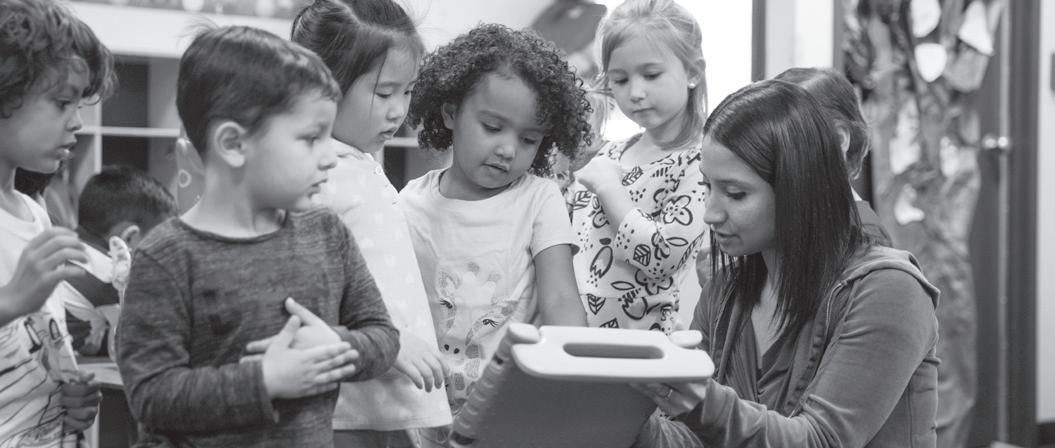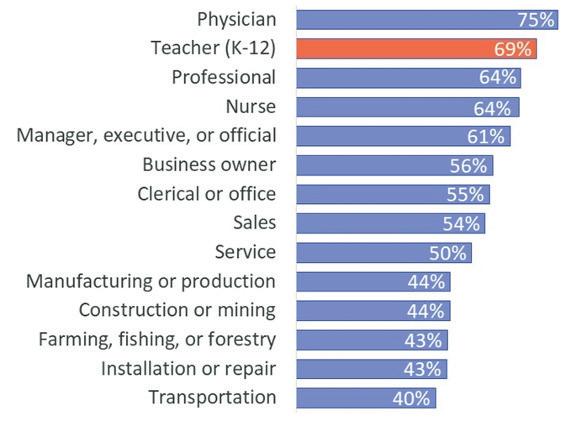Preparing for Interviews and Job Fairs
How to Prepare for a Virtual Interview & Teaching Demonstration Dr. Jessica Hall-Wirth, Dr. Toni Mild, and Dr. Ashlea Rineer-Hershey College of Education, Slippery Rock University of Pennsylvania
O
ver the past year, the business and education sectors have been completely flipped upside down due to the Coronavirus pandemic. Businesses are having to contemplate new strategic ways to move forward, and the field of education has had to implement both hybrid and virtual learning to reach students. Technology has completely changed the way that the world works, both near-term and long-term—interviewing is no different. 1. Research background information about the district It is important to learn everything you can about the district to which you are applying. Who is on their school board? Do they use a PBIS program? In what type of area is the school located? 2. Practice using the online platform used for the interview Nothing is worse than being unprepared for an interview or teaching demonstration. Each online platform is different, so it is important to learn how to navigate it for your interview. Before your interview, invite a few friends or family to ‘sit in’ on your Zoom room for you to practice your demonstration. You will want to learn how to utilize all tools, know what it looks like from your viewpoint and your attendees’ perspective, check audio and video, and play out all possible scenarios.
3. Create and/or prepare a professional background Do the best you can with what you have at home. Create a space that is professional and free of clutter. In preservice programs, we recommend to our students to create a ‘teaching background’. Such a background could include a white board, calendar, bulletin board with information to assist with a lesson, and/or a plain setting. If you are using Zoom, you might also have the option to upload a professional virtual background. (Note ‘professional’ - a beach scene may not be the best choice for this type of meeting.) 4. Plan a time for the interview with little distractions Face it, our homes can be chaotic. The dog may be barking at the mail carrier, children playing in the background, and someone cooking in the kitchen - all at once. These activities can create a very distracting and loud environment. When planning your interview and teaching demonstration, try to find a time that you can be in a quiet, distraction-free environment. Try placing your phone on “do not disturb” or even keeping it in another room. Also turn off any notifications, such as new email alerts, that may chime during your interview.
70 American Association for Employment in Education
5. Have a secondary device ready You never know when something will happen with your technology. If available, have a second computer, iPad or similar device readily available to use. 6. Check your internet speed before your interview Give yourself plenty of time before your interview to check your internet connection. Is your internet running up to speed? Do you need to check with your provider? If you are sharing internet bandwidth with others in the home, ask if they could avoid using the internet during your interview to enable a better connection. 7. Practice addressing the full question asked When using technology, such as text messaging and calling to communicate, we often keep our language brief. Practice addressing questions to the fullest capacity. Be sure to get your point across the best way possible with the time frame that you are given. 8. Keep things simple, yet engaging During an interview, you may want to pull out all of the stops to impress the panel. However, in an online setting, that can be a challenge. Keep things simple yet engaging. Imagine how students would react if you asked them to ‘submit a Google Doc to Dropbox”. 9. Dress professionally Although you may be in the comfort of your own home, it is still important to look professional in your attire. For men, a suit jacket and tie is recommended. For women, a blazer, sweater, or dress. Be sure to wear appropriate on your lower half as well - you don’t want to be caught wearing pajama bottoms! 10. Have a back-up plan Your original idea for a teaching demonstration may not end up working out. Always develop a backup plan. Such preparation is not only important for the day of your lesson, but also when you are in the classroom and need to be responsive to your student needs. Our ‘new normal’ is now a world that constantly throws us curve balls and can increase our anxiety with everyday tasks. But, by following these simple tips, you can be better equipped for your virtual interview. Taking the time to prepare can ensure that you are showcasing your best self and can also put you at ease during the interview process.































